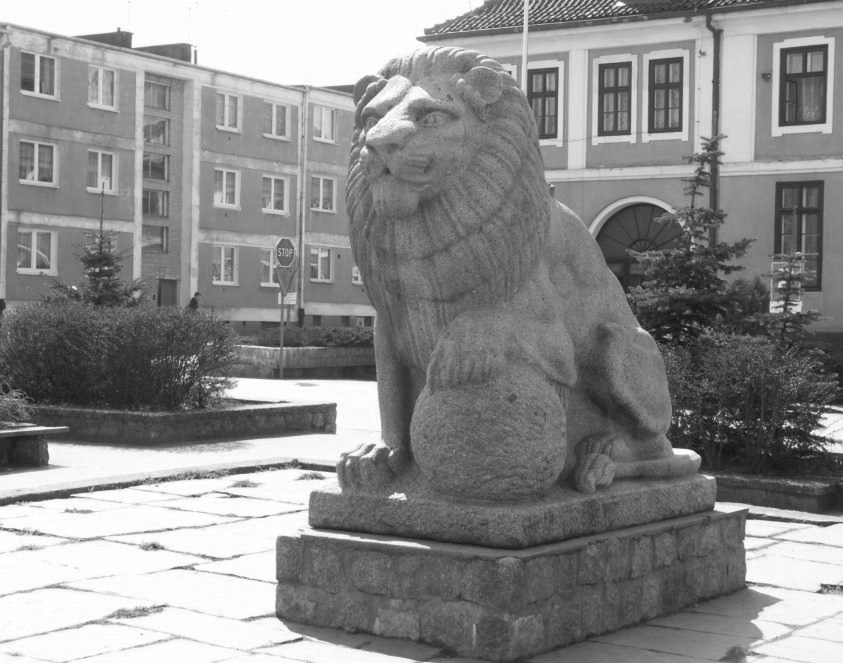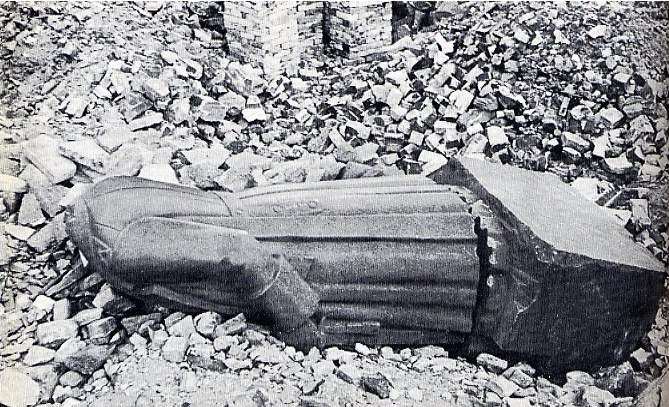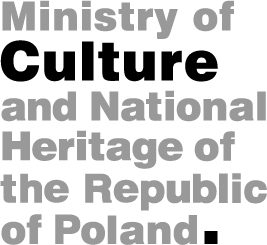|
|
Objects located around the Tannenberg Memorial practically do not exist. Tannenberg-Krug was burnt down, and many years later the present motel Zajazd Mazurski was built in its site. All the statues of stone and bronze were either stolen or destroyed, only the Lion Monument by an Italian sculptor Michelangelo Pietrobelli, devoted to the memory of fallen soldiers from the 147 Infantry Regiment survived. Originally, this monument was placed on an eight-metre high, pyramidal plinth, its measurements being: length 210 cm, height 110 cm, weight 7 tons. Only in the 1950, soldiers removed the effigy from the plinth using a crane and took the monument away. The Lion found itself at the Training Centre for the Border Guard Military Units in Kętrzyn and, probably, only thanks to this it survived. In 1993, the Commander from Kętrzyn presented the effigy to the Town of Olsztynek free of charge. Now, the effigy stands on a low, stone plinth on the square in front of Olsztynek Town Hall. A systematic demolition of the Prussian monument continued for many years. It was done by people from the vicinity, spontaneously searching for building material for their pigsties, chicken houses and other farm buildings. In the early 1980s, the authorities of the Town of Olsztynek planned to develop a ring road across the site of the monument. Therefore, the remains of the walls were torn down and the lowering of the courtyard was levelled using various sort of debris. However, the ring road was finally not built; instead, a shooting range for low-calibre arms had been organised on the area of the mausoleum by end of the 1980s. Currently, the former site of "the monument to German glory" has been overgrown by weeds, shrubs and bushes, and trees. One needs to demonstrate much attention and determination to find at least some of its remains: rubble, bricks, and tiles of the former building. A characteristic lowered pan, where the courtyard of the monument previously was, is now overgrown by nettle. Probably, the foundations and basements, now covered by earth, have been preserved. It is obvious that this area has for many years been the exploration field for various amateur treasure hunters. Therefore, any found remains, war keepsakes which were dug out from the ground around the monument have now been dispersed. They were absorbed by people, added to other monuments and/ or architectural objects. The monumental solid of The Tannenberg Denkmal was erased from the face of the earth. Nowadays, the symbolism and historic importance of The Tannenberg Denkmal have lost their raison d'ętre. Naming streets and public objects with names linked with those events took only place on the territory of former German Federal Republic. In the years 1985-1990, a public fierce debate took place which turned into the protest of school teachers of a Tannenberg-Battle Comprehensive School in West Berlin (the name since 1933) against the continuation of using this name. This controversial protest, widely commented in the media, reached beyond the school walls, additionally involving pupils and parents, along with professional historians, publicists and politicians. After about five years of a public discussion, the solution was reached by voting. With a slight majority a new name was given to the school, that of an anti-Hitler plot of "White Rose". Translated by Marzena Beata Guzowska
1
2
|
.jpg)
Tannenbeg-Krug, designed by Walter and Johannes Krüger; refashioned in later years. Currently, there is the Zajazd Mazurski motel on this site. 
Originally: The Monument to the 147 Infantry Regiment, standing in the vicinity of The Tannenberg Denkmal, currently located in front of the Olsztynek Town Hall. 
Hindenburg's Monument against the background of the memorial ruined by the end of the 2nd World War. |
|||
| |||||
